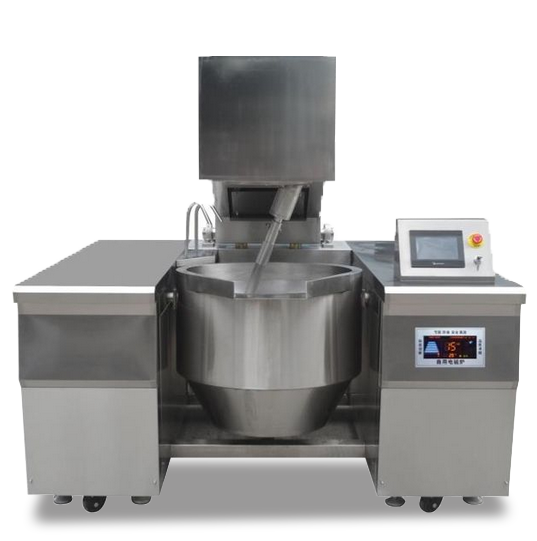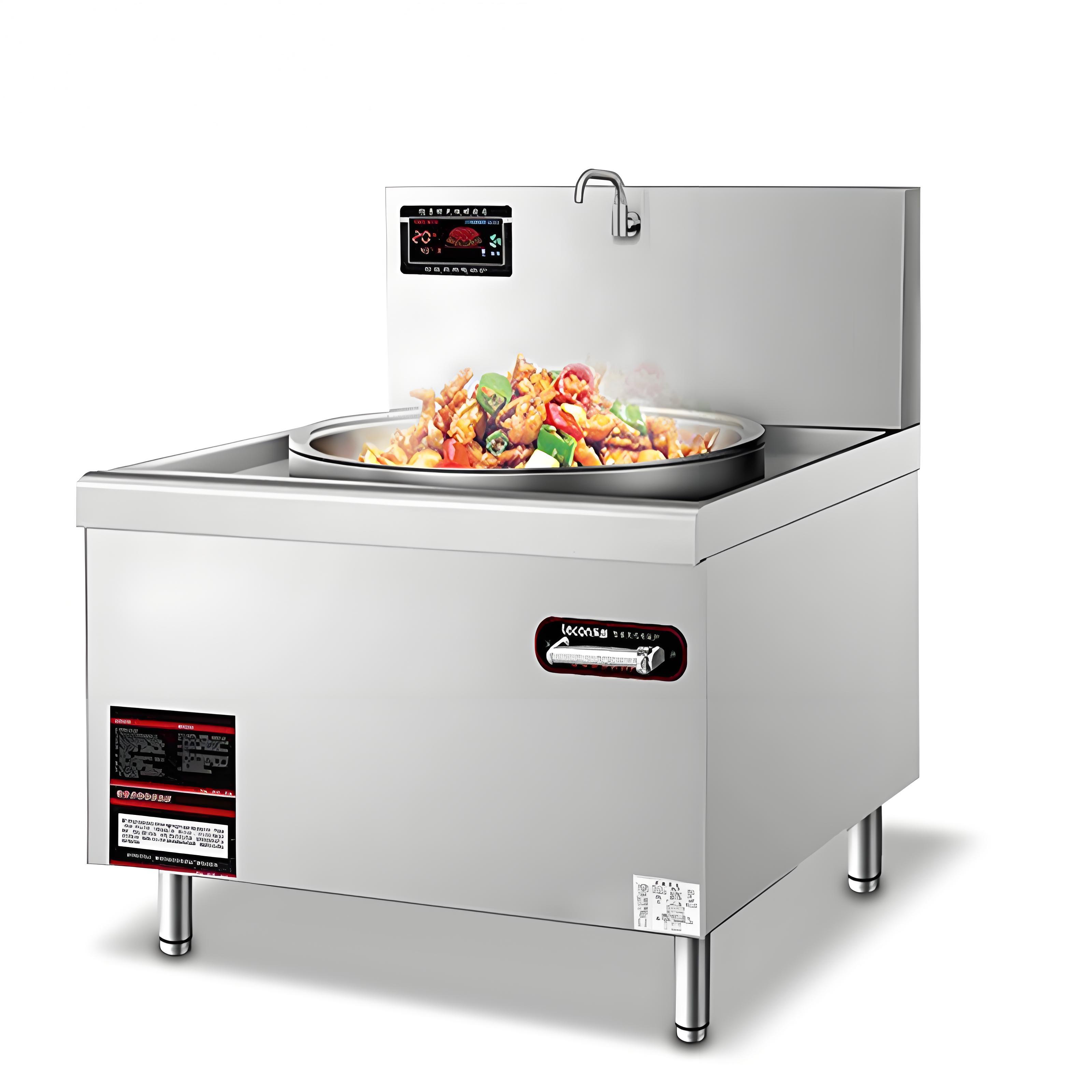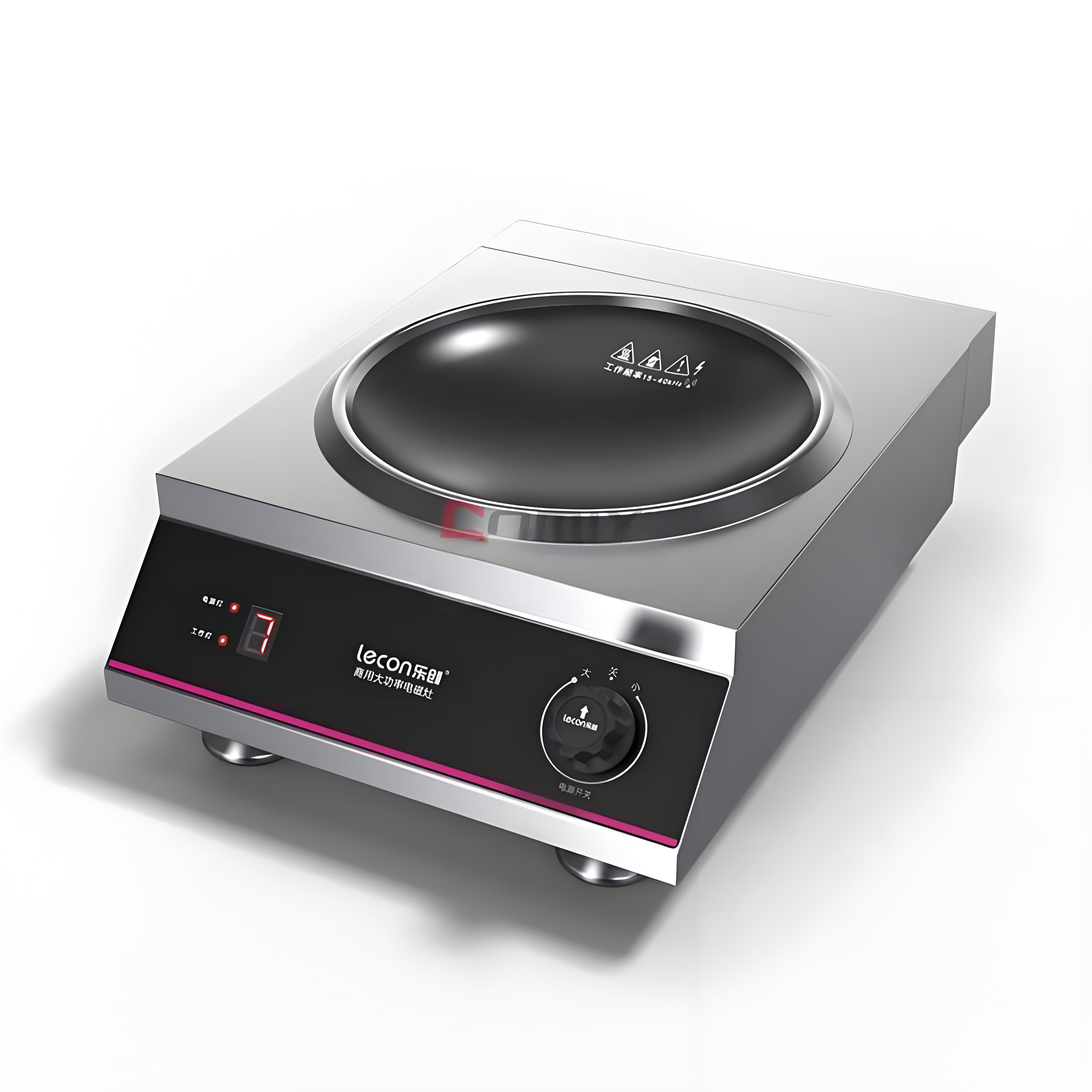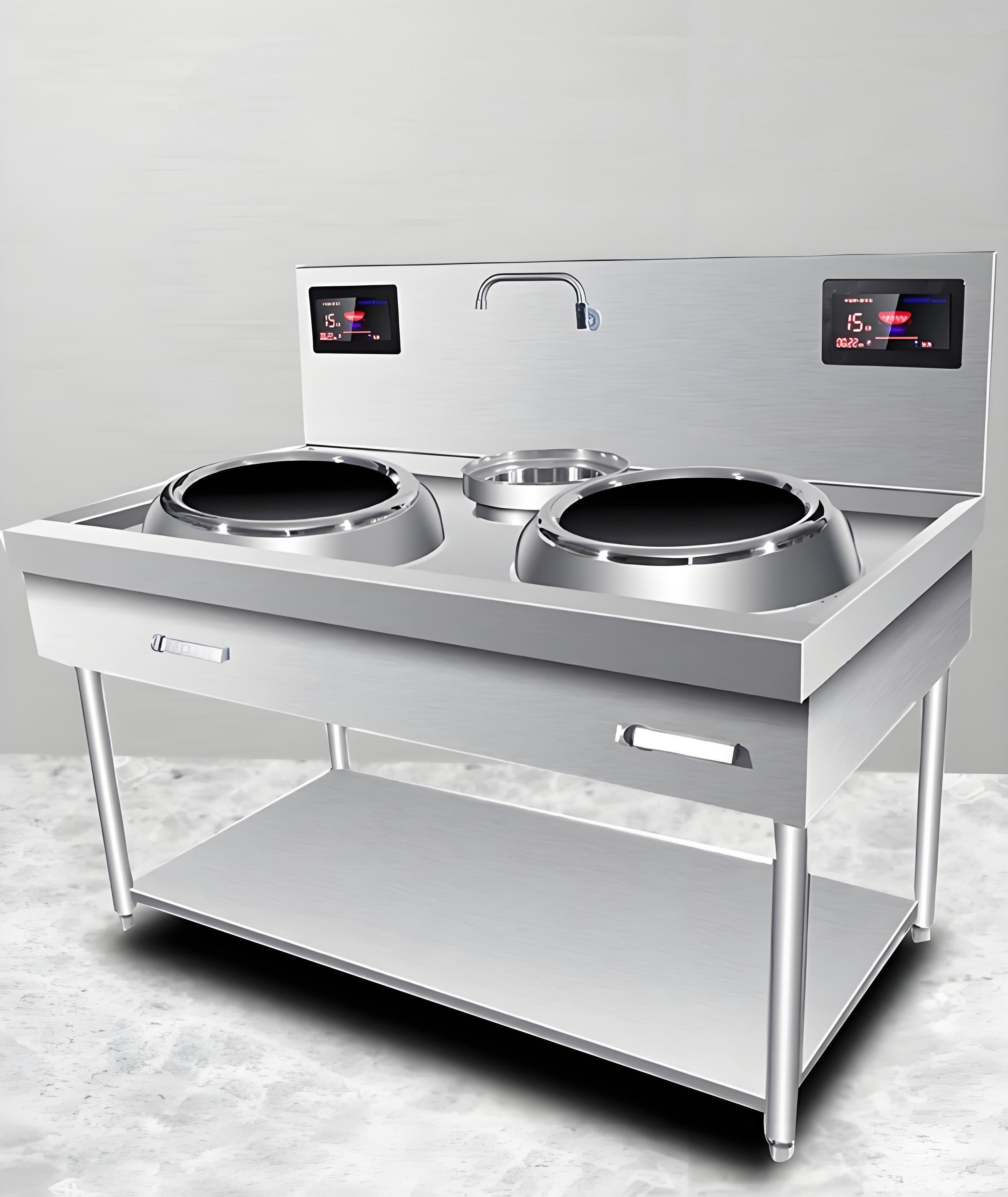In the bustling world of commercial kitchens, every decision counts when it comes to cost-efficiency and operational excellence. As someone who has spent years immersed in the culinary equipment industry, I’ve witnessed firsthand the debates and considerations that go into choosing between commercial induction cookers and gas stoves. Today, I’m here to break down the financial implications of both options, helping you make an informed decision that aligns with your business goals.

Understanding the Basics
Before diving into the cost comparison, it’s essential to understand the fundamental differences between commercial induction cookers and gas stoves.
Commercial Induction Cookers operate on the principle of electromagnetic induction. They generate heat directly within the cookware, eliminating the need for an open flame or heating element. This results in faster heating times, precise temperature control, and improved energy efficiency.
Gas Stoves, on the other hand, rely on the combustion of natural gas or propane to produce an open flame. This flame heats the cookware and its contents, providing a traditional cooking experience that many chefs swear by.
Initial Investment Costs
When considering the financial aspect of purchasing new kitchen equipment, the initial investment is often the first factor that comes to mind. Let’s compare the upfront costs of commercial induction cookers and gas stoves.
Table 1: Initial Investment Costs
| Equipment Type | Average Cost Range (USD) | Factors Influencing Cost |
|---|---|---|
| Commercial Induction Cooker | 10,000+ | Brand, power output, features (e.g., touch controls, multiple cooking zones) |
| Gas Stove | 5,000+ | Brand, size, number of burners, material (e.g., stainless steel, cast iron) |
From the table above, it’s evident that commercial induction cookers generally have a higher initial cost compared to gas stoves. However, this doesn’t tell the whole story. The long-term operational costs and benefits must also be taken into account.

Energy Efficiency and Operating Costs
One of the most significant advantages of commercial induction cookers is their energy efficiency. Let’s explore how this translates into cost savings over time.
Energy Consumption Comparison
Commercial induction cookers convert nearly 90% of the electrical energy they consume into heat, whereas gas stoves typically have an efficiency rating of around 40-60%. This means that for every dollar spent on energy, induction cookers deliver more heat to the cookware, reducing waste and lowering overall operating costs.
Table 2: Estimated Annual Energy Costs (Based on 8 Hours of Daily Use)
| Equipment Type | Average Energy Consumption (kWh/year) | Estimated Annual Cost (USD, at $0.12/kWh) |
|---|---|---|
| Commercial Induction Cooker (4 kW) | 11,680 | $1,401.60 |
| Gas Stove (20,000 BTU/hour) | 58,400 kWh equivalent (assuming 30% efficiency) | 0.048/kWh equivalent) |
Note: The gas stove’s energy consumption is converted to kWh equivalent for comparison purposes, assuming a 30% efficiency rate and a gas cost of 1.20 per therm and 1 therm = 29.3 kWh).
As demonstrated in the table, even with a conservative estimate of gas stove efficiency, the annual energy costs for a commercial induction cooker are significantly lower. Over time, these savings can add up to a substantial amount, offsetting the higher initial investment.
Maintenance and Repair Costs
Another crucial aspect to consider is the ongoing maintenance and repair expenses associated with each type of equipment.
Commercial Induction Cookers
Induction cookers have fewer moving parts compared to gas stoves, which means there are fewer components that can wear out or break down. Additionally, the absence of an open flame reduces the risk of fire hazards and damage to the cooktop surface. Regular maintenance typically involves cleaning the cooktop and ensuring proper ventilation, which is relatively straightforward and inexpensive.

Gas Stoves
Gas stoves, with their intricate network of burners, valves, and ignition systems, require more frequent maintenance to ensure safe and efficient operation. Components such as igniters, thermocouples, and gas lines may need to be replaced periodically, adding to the overall maintenance costs. Furthermore, the presence of an open flame increases the risk of accidents and damage, potentially leading to costly repairs or replacements.
Table 3: Estimated Annual Maintenance and Repair Costs
| Equipment Type | Average Annual Cost (USD) | Factors Influencing Cost |
|---|---|---|
| Commercial Induction Cooker | 500 | Brand, usage frequency, cleaning practices |
| Gas Stove | 1,000+ | Brand, age, maintenance history, frequency of repairs |
Based on the table, it’s clear that commercial induction cookers generally have lower maintenance and repair costs compared to gas stoves. This further contributes to their cost-effectiveness over the long term.
Productivity and Efficiency Gains
While cost savings are a primary consideration, it’s also important to evaluate how each type of equipment impacts productivity and efficiency in the kitchen.
Cooking Speed and Precision
Commercial induction cookers offer faster heating times and more precise temperature control compared to gas stoves. This allows chefs to prepare dishes more quickly and consistently, reducing wait times for customers and increasing table turnover rates. Additionally, the ability to adjust temperatures instantly and accurately can lead to improved food quality and reduced waste due to overcooking or undercooking.

Safety and Work Environment
The absence of an open flame in induction cookers enhances safety in the kitchen, reducing the risk of burns, fires, and other accidents. This creates a more comfortable and secure work environment for staff, potentially leading to lower insurance premiums and fewer work-related injuries. Furthermore, induction cookers produce less ambient heat compared to gas stoves, keeping the kitchen cooler and more pleasant to work in during hot weather.
Table 4: Productivity and Efficiency Benefits
| Benefit | Commercial Induction Cooker | Gas Stove |
|---|---|---|
| Cooking Speed | Faster | Slower |
| Temperature Control | More precise | Less precise |
| Safety | Higher (no open flame) | Lower (open flame risk) |
| Work Environment | Cooler | Hotter (ambient heat) |
As shown in the table, commercial induction cookers offer several advantages in terms of productivity and efficiency, which can translate into cost savings and improved customer satisfaction.
Making the Decision: Factors to Consider
Now that we’ve explored the various aspects of cost and efficiency, it’s time to consider the factors that will influence your decision between commercial induction cookers and gas stoves.
Budget and Financial Goals
If your primary concern is minimizing upfront costs, a gas stove may be the more attractive option. However, if you’re willing to invest in long-term savings and efficiency gains, a commercial induction cooker could be a wise choice. Consider your budget constraints and financial goals when making this decision.
Kitchen Layout and Ventilation
Induction cookers require proper ventilation to dissipate heat and prevent overheating, although they produce less ambient heat compared to gas stoves. Ensure that your kitchen layout can accommodate the ventilation requirements of an induction cooker if you choose this option. Gas stoves, on the other hand, require robust ventilation systems to remove combustion byproducts and maintain air quality.

Menu and Cooking Style
Your menu and cooking style can also influence your choice of equipment. If you frequently prepare dishes that require precise temperature control or rapid heating, an induction cooker may be the better fit. Conversely, if you rely heavily on traditional cooking techniques that utilize an open flame, a gas stove might be more suitable.
Staff Training and Preferences
Consider the training and preferences of your kitchen staff when making this decision. Some chefs may be more familiar and comfortable with gas stoves, while others may embrace the advanced features and efficiency of induction cookers. Providing training and support can help ensure a smooth transition to new equipment, regardless of your choice.
Conclusion
In the battle between commercial induction cookers and gas stoves, there is no one-size-fits-all answer. The decision ultimately depends on your specific needs, budget, and long-term goals. While gas stoves may have a lower initial cost, commercial induction cookers offer significant savings in terms of energy efficiency, maintenance, and productivity over time. By carefully evaluating the factors outlined in this article, you can make an informed decision that maximizes cost-effectiveness and enhances the overall performance of your commercial kitchen.

Related Q&A
Q: Are commercial induction cookers more expensive to repair than gas stoves?
A: Generally, no. Commercial induction cookers have fewer moving parts and a simpler design, which often results in lower repair costs compared to gas stoves with their complex burner and ignition systems.
Q: Can I use any type of cookware on a commercial induction cooker?
A: No, not all cookware is compatible with induction cookers. You’ll need to use cookware made of ferromagnetic materials, such as cast iron or stainless steel, that can interact with the electromagnetic field generated by the cooker.
Q: Do commercial induction cookers require special electrical connections?
A: Yes, commercial induction cookers typically require dedicated electrical circuits with higher amperage ratings compared to standard kitchen appliances. It’s important to consult with a qualified electrician to ensure proper installation and safety.
Q: Are gas stoves being phased out in favor of induction cookers?
A: While induction cookers are gaining popularity due to their efficiency and safety benefits, gas stoves are still widely used in commercial kitchens around the world. The choice between the two depends on individual preferences, menu requirements, and budget considerations.
Q: Can I retrofit my existing kitchen with commercial induction cookers?
A: In many cases, yes. However, it’s important to assess your kitchen’s electrical capacity, ventilation system, and space constraints before making the switch. Consulting with a professional kitchen designer or equipment supplier can help ensure a successful retrofit.



